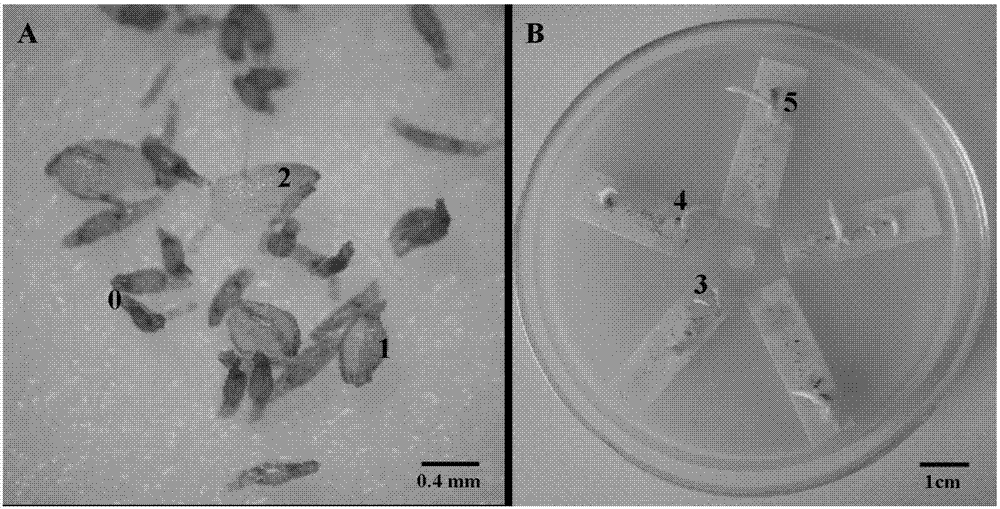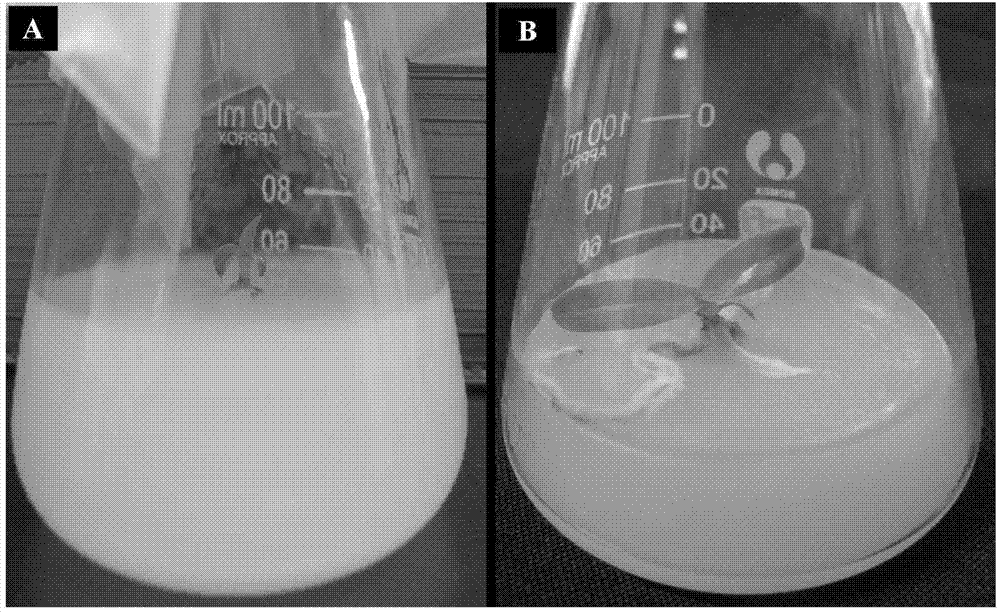Fungus for promoting symbiotic germination of paphiopedilum hirsutissimum seed and application thereof
A technology of Paphiopediphyllum and seeds, which is applied in the field of fungi that promote the symbiotic germination of Paphiopediphyllum seeds, can solve the problems of lack of strains for symbiotic germination of Paphiopediphyllum seeds, and difficulty in separating and cultivating mycorrhizal fungi, achieving low cost and simple operation , the effect of promoting seedling development
- Summary
- Abstract
- Description
- Claims
- Application Information
AI Technical Summary
Problems solved by technology
Method used
Image
Examples
preparation example Construction
[0020] The preparation method of oat medium: add 8g of oatmeal into distilled water, boil for 30 minutes, filter with gauze and collect the filtrate, make the volume to 1000ml with distilled water, then add 10g of agar and 0.05g of chloramphenicol, heat and stir until the agar dissolves, After subpackaging, sterilize with damp heat at 121°C for 20 minutes.
[0021] The preparation method of the mixed substrate: mix equal volumes of sand and vermiculite, and cover the surface with a layer of moss.
Embodiment 1
[0022] Embodiment 1, acquisition, identification and preservation of bacterial strains
[0023] 1. Obtaining the strain PhI17
[0024] Take the vegetative root segment of P.hirsutissimum collected in the field that grows well, and gently peel off the fluffy root of the root segment, and rinse it under tap water. Microscopic inspection under an optical microscope, select the root segments that form abundant mycelium clusters. On an ultra-clean workbench, soak in 75% alcohol for 30 seconds, then sterilize the root surface with 1% NaClO for 4 minutes, wash with sterile water for 3-4 times, and dry the water with sterile filter paper. Cut the root segment into thin slices with a thickness of about 0.5 mm with a sterilized razor blade, spread them on 1 / 5 PDA separation medium, and cultivate them in an incubator at 25 °C. After the hyphae grew out from the root slices, they were transferred to PDA medium for purification and culture, and finally stored at 4°C on the slope of the P...
Embodiment 2
[0034] Embodiment 2, bacterial strain PhI17 and the symbiotic germination of P. pachyderm seeds
[0035] 1. Acquisition of Pachyphyllum chinensis seeds
[0036] Collect the naturally strong, well-grown, full-bodied, seven or eight mature and uncracked capsules of Pachyphyllum pallidum in the field, and repeatedly wipe the surface of the capsules with 75% alcohol cotton to remove the fluff of the pericarp. Soak for 30s, then sterilize with 4.5% NaClO for 8min, wash with sterile water 3-4 times. Place the capsules in a petri dish with sterile filter paper placed in advance, hold the capsules with tweezers with one hand, and cut the fruit longitudinally with a scalpel with the other hand to take out the seeds. Take a small amount of seeds to observe the embryonic rate to ensure that the embryonic rate of the seeds used for the test is greater than 80%.
[0037] 2. Obtaining of agar block of bacterial strain PhI17
[0038] Pick the PhI17 colony and inoculate it on a PDA medium ...
PUM
| Property | Measurement | Unit |
|---|---|---|
| thickness | aaaaa | aaaaa |
| diameter | aaaaa | aaaaa |
Abstract
Description
Claims
Application Information
 Login to View More
Login to View More - R&D Engineer
- R&D Manager
- IP Professional
- Industry Leading Data Capabilities
- Powerful AI technology
- Patent DNA Extraction
Browse by: Latest US Patents, China's latest patents, Technical Efficacy Thesaurus, Application Domain, Technology Topic, Popular Technical Reports.
© 2024 PatSnap. All rights reserved.Legal|Privacy policy|Modern Slavery Act Transparency Statement|Sitemap|About US| Contact US: help@patsnap.com










